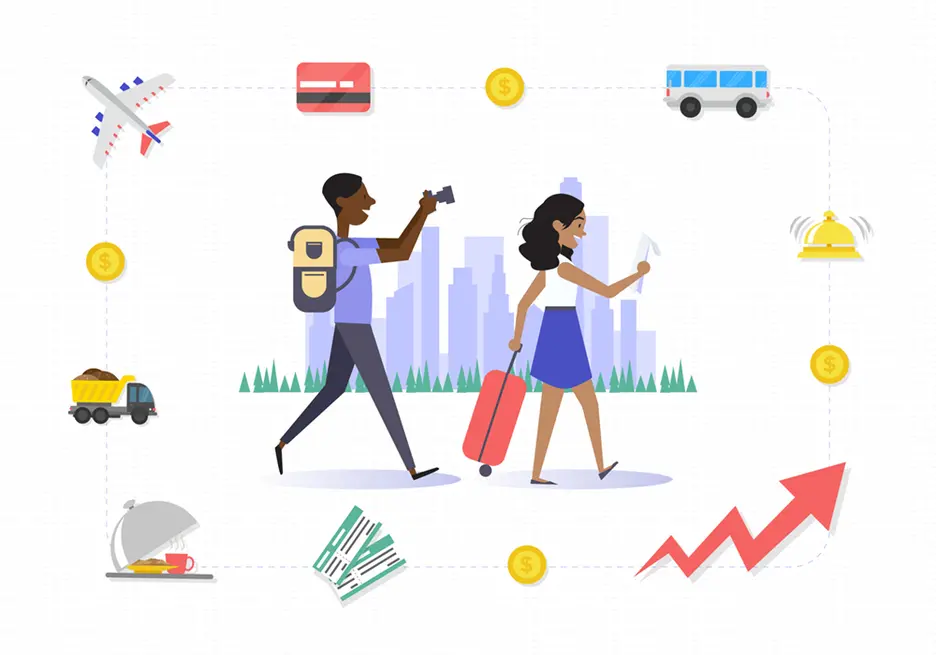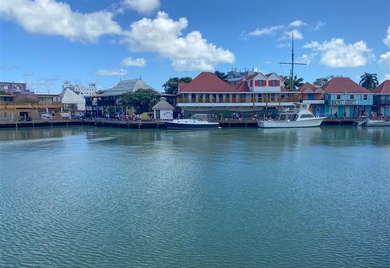Can your trip to the beach help reduce poverty?

After all, tourism is one of the world’s largest economic sectors, generating 10% of global Gross Domestic Product (GDP) and employing one out of 10 workers across the globe . Its economic impact is even greater in small and island countries in Latin America and the Caribbean, generating on average 18% of GDP and nearly 15% of employment in 2017, with more than half of jobs in the sector occupied by women. Additionally, tourism is a major source of foreign exchange for many economies. In Jamaica, international tourism receipts were equivalent to 56% of the country’s total exports in 2015.
Tourism’s economic relevance seems clear, but can it help reduce poverty?
Tourism and poverty reduction
Let’s start by understanding what the tourism sector is. Unlike other industries, it is not a single and clearly identified universe. The tourism supply chain involves a wide range of sectors such as hotels, restaurants, tourism amenities, transportation services, and the various suppliers that support the system. The tourism industry’s contribution to growth, poverty reduction, and long-term development depends on complex and dynamic economic, social, environmental, and institutional linkages.
Similarly, tourism-related investments are diverse, from infrastructure and the provision of basic public services such as water and sanitation to capacity building in the hospitality sector and strengthening tourism sector governance. So, understanding the economy-wide effects of tourism requires comprehensive estimation techniques that can capture the full picture of these interconnections.
What do we know about tourism’s impact on poverty reduction? A review of several studies covering various destinations in Africa, Asia, and Latin America finds that 10% to 30% of tourism expenditures tends to reach the poor. A 2017 study based on Kenya finds that when an economy is characterized by lower skilled and labor intensive sectors, there is a high probability that tourism development will increase incomes among poor populations. And, in Costa Rica and Nicaragua, a recent study suggests that a 1% increase in foreign tourism expenditure reduces poverty by 0.58% and 0.64%, respectively, and shows that tourism may be a bigger poverty reducer than other sectors such as agriculture in both countries.
Increased private investment in tourism can reduce poverty
In a recent IDB Invest study, we investigated whether an increase in private investment in tourism infrastructure can have an impact on alleviating poverty in Jamaica, an economy that relies heavily on tourism. We developed a tool to assess the economy-wide impact of private investments in the hotel industry. Our study assumes a large increase in private investments in hotels from 2018 to 2020 (US$600 million). We evaluate how different scenarios could play out over a 10-year period after these investments are made based on varying levels of foreign tourism spending, and compare each projection to a “business as usual” scenario.
Our results show that between 2018 and 2030, poverty in Jamaica could fall on average by 2.3% per year with respect to the “business as usual” scenario, mainly driven by a decrease in unemployment and a higher average wage. This could represent about 120,000 Jamaicans - about 4% of today’s population - being lifted out of poverty during that 13-year timeframe. The results, however, did not show impacts on inequality.
We also find various impacts on GDP growth at the sector level. Service industries catering directly to tourists, including hotels and restaurants, are strongly stimulated by the expansion in tourism investment. On the other hand, the upward pressure on prices and the real exchange rate leads to a decrease in both employment and value added in manufacturing and mining, two of Jamaica’s most export-oriented sectors.
Why does this matter? Findings such as these can provide important insights to development finance institutions and governments in Latin America and the Caribbean seeking to develop tourism investment strategies or policies involving the private sector. A deeper understanding of the broader impact potential of private finance in the sector can help better target investments and ensure that the economic and social benefits of tourism reach as many people and places as possible.
For more information, see The Economic Impacts of Private Tourism-Related Investment in Jamaica, part of IDB Invest’s Development through the Private Sector Series, or a brief summarizing this study.
LIKE WHAT YOU JUST READ?
Subscribe to our mailing list to stay informed on the latest IDB Invest news, blog posts, upcoming events, and to learn more about specific areas of interest.
Subscribe



